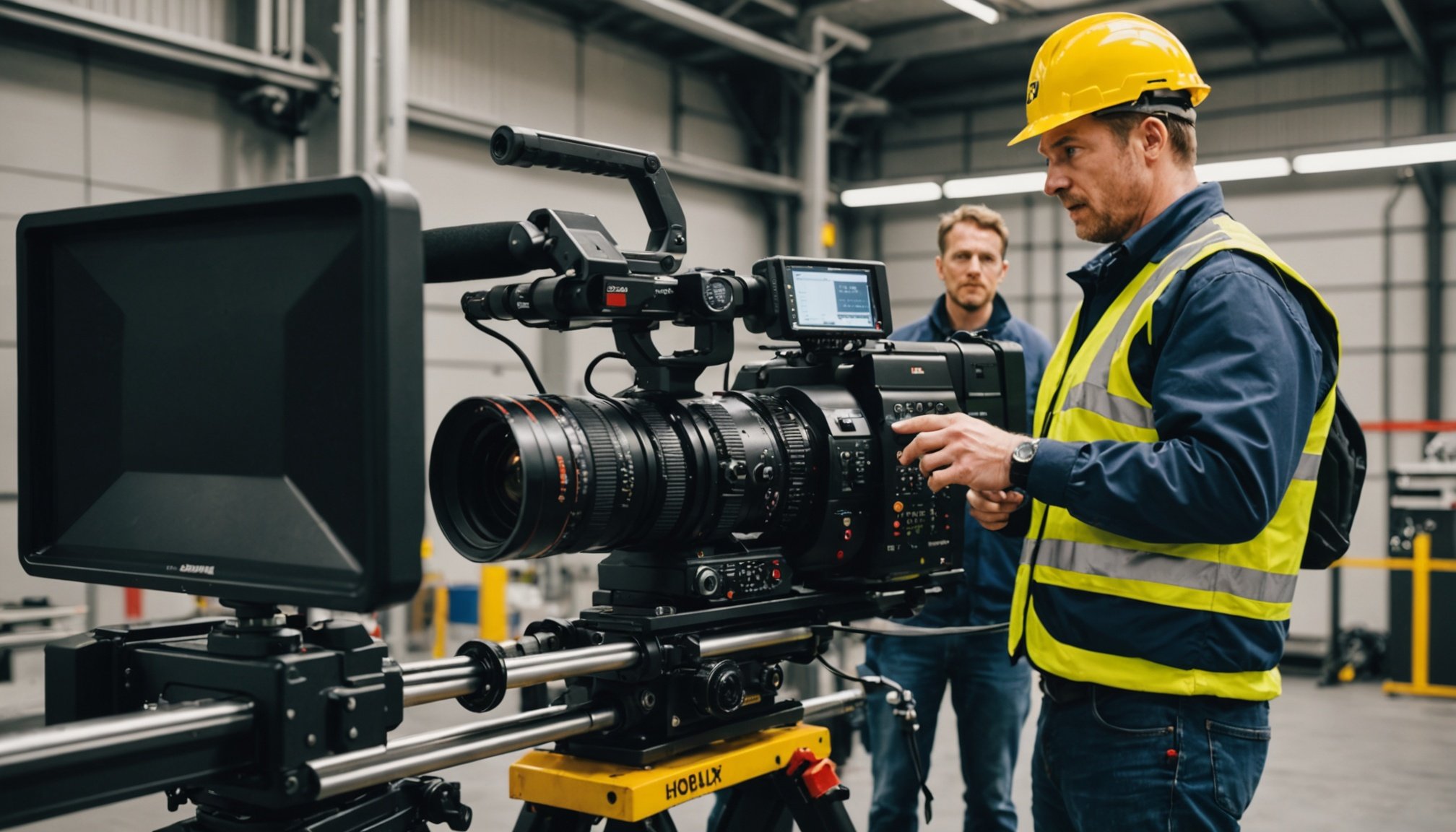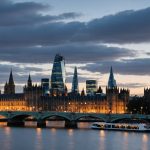Overview of Health and Safety Regulations in UK Film Production
In the complex world of UK film production, adhering to legislated guidelines is not merely a formality; it is fundamental for ensuring the well-being of all involved. Central to this is the comprehensive Health and Safety Regulations, designed to create a safer working environment. The key legislative cornerstone here is the Health and Safety at Work Act, which mandates employers to provide an environment free from predictable hazards.
The Health and Safety Executive (HSE) plays a pivotal role in enforcing these regulations. As the national watchdog, the HSE ensures the film industry complies with health and safety laws, conducting inspections and investigations as needed.
Additional reading : Ultimate Compliance Playbook: Crucial Steps for UK E-Marketplaces to Satisfy E-Commerce Rules
Understanding these regulations is vital for producers, directors, and the entire production team. Compliance ensures not only legal adherence but also mitigates the risk of accidents on set, fostering a culture of safety.
Failing to observe these safety measures can lead to serious consequences, including shutdowns, fines, or legal action. For filmmakers, incorporating Health and Safety Regulations into their planning phases is an essential step towards successful and safe film production. This prioritizes not only productivity but the overall wellbeing of the cast and crew.
Also to see : Discover Premier Digital Marketing Strategies for UK Subscription Boxes: Amplify Your Reach and Enhance Engagement
Risk Assessment Procedures
Understanding risk assessment in film production is crucial for ensuring safety on set. A risk assessment identifies potential hazards and establishes necessary precautions. Its importance lies in foreseeing dangers and preventing accidents, making it indispensable for film production safety.
The process involves several key steps. First, identify the specific activities and areas that might pose risks. Next, evaluate these risks and decide who might be harmed and how. It’s essential to record the findings and plan appropriate safety measures. Finally, regularly review the assessment, especially when new equipment or scenes are introduced.
Common hazards in filming environments include electrical risks, trip hazards from cables, and heavy machinery operations. Weather conditions, heights, and pyrotechnics also contribute to on-set dangers. Addressing these requires comprehensive planning and management.
For example, if a scene involves stunt work, an assessment might cover potential injuries from falls or impacts. Plans would then implement safety harnesses and set protocols for emergency medical aid. Regular assessments foster a proactive safety culture, ensuring a secure environment for cast and crew. Adhering to robust risk assessment practices not only safeguards lives but enhances the film production reputation.
On-Set Safety Practices
Creating a safe film set is essential for both productivity and well-being. Implementing on-set safety practices is critical in ensuring smooth operations. Safety equipment requirements form the backbone of these practices. Essential personal protective equipment (PPE) includes hard hats, goggles, and gloves, which protect against common hazards. Ensuring availability and correct usage of equipment sets a foundation for safety.
Next is the implementation of training and safety protocols. Mandatory safety training for cast and crew can significantly reduce accident risks, keeping everyone informed about their roles and responsibilities when it comes to on-set safety. Regular safety drills and updates align with legal requirements and promote a culture of awareness.
Equally important is emergency response planning. On-set emergencies can range from minor injuries to more severe incidents. Establishing effective emergency response procedures is critical. Assigning response roles and ensuring that first-aid kits and emergency contacts are accessible can be lifesaving. Coordinating with local emergency services ensures a swift response if required.
Incorporating these film production best practices constructs a proactive approach, demonstrating a commitment to pioneering safe environments. With structured methods, filmmakers can focus on creativity, knowing robust safety protocols are in place.
Health and Wellbeing Considerations
The intense demands of film production can take a toll on mental health and overall crew wellbeing. Recognizing and addressing mental health issues is crucial in high-pressure filming environments. Cast and crew often face long hours and tight deadlines, leading to stress and anxiety. Implementing wellness programs can serve as a vital support mechanism. These programs may include mindfulness sessions, regular mental health check-ins, and access to counselling services, fostering a supportive atmosphere.
Recognizing signs of physical and mental fatigue on set can prevent burnout. It’s essential to observe team members for symptoms like irritability, lack of concentration, or physical exhaustion. Open communication channels should be maintained, allowing anyone to express concerns without fear of stigma.
Proactive strategies include scheduled breaks, ensuring adequate rest periods, and encouraging a balanced work-life approach. Providing nutritious meals and promoting hydration contribute to maintaining energy levels through demanding shoots.
By prioritizing mental and physical health, productions can safeguard the wellbeing of their teams, boosting morale and fostering a more positive work environment. These practices not only support individual health but also enhance collective project outcomes.
Compliance Checklists for Film Production
Compliance checklists are indispensable tools for ensuring film set safety. They help maintain rigorous standards throughout the production process, serving as reminders and guides for compliance with health and safety regulations. These checklists must be tailored to the specific needs of each project, encompassing various phases of production—from pre-production planning to on-set execution and post-production wrap-up.
Sample Checklists for Different Phases
-
Pre-Production: Ensure all potential hazards are identified. Verify permits and licences, and conduct initial safety briefings.
-
On-Set: Implement daily safety meetings, monitor protective gear availability, and confirm emergency protocols are in place.
-
Post-Production: Document any incidents and review safety measures to improve future practices.
Customization for Specific Projects
Every film location and scene carries unique risks; therefore, adapting checklists to specific environments ensures thorough safety coverage. Considerations might include local weather conditions or unique equipment.
By incorporating compliance checklists, production teams can systematically address safety measures, significantly reducing risks. This proactive approach not only ensures legal compliance but also fosters a culture of safety, providing peace of mind and a secure environment for cast and crew.
Case Studies of Health and Safety in Film Production
Case studies offer invaluable insights into effective filmmaking safety practices. Examining real-world examples where safety was prioritized demonstrates successful implementation and highlights potential pitfalls.
Analyzing successful case studies can provide practical safety lessons. For instance, a major UK production recently implemented a comprehensive Health and Safety Regulations framework, resulting in zero on-set accidents. Their approach included detailed risk assessments, rigorous safety training, and robust emergency response strategies. These measures illustrate how foreseeing potential hazards and proactive planning enhance overall film production safety.
Conversely, lessons learned from incidents or accidents on film sets are equally instructive. An incident involving inadequate risk assessment and insufficient protective gear led to serious injury, underlining the critical need for stringent compliance with safety protocols. Such events emphasize the significance of tailored safety measures and the continuous updating of safety protocols in dynamic filming environments.
By studying these case studies, filmmakers can adopt best practices that not only ensure legal compliance but also foster a culture of safety. Adopting these learnings can lead to safer productions, safeguarding crew wellbeing and maintaining project integrity. These real-life experiences enhance the industry’s collective safety knowledge.
Resources for Further Reading and Compliance
For all engaged in UK film production, a wealth of resources offers guidance on regulatory compliance and best practices. Accessing these industry resources is crucial for staying informed and ensuring safety.
Government and Regulatory Body Resources
Understanding compliance guidelines is made easier through resources from bodies such as the Health and Safety Executive (HSE). The HSE provides extensive documentation on compliance standards and safety practices, crucial for filmmakers to implement robust health and safety frameworks.
Professional Organizations and Their Guidance
Several professional organizations offer invaluable support. For instance, the British Film Institute (BFI) provides online resources and workshops aimed at enhancing knowledge of safety compliance. They assist filmmakers in navigating the complexities of health and safety regulations, thus promoting safer film environments.
Training and Certification Programs
Participating in relevant training programs ensures that film teams stay well-informed. Courses offered by institutes like ScreenSkills provide certification in adherence to compliance guidelines, helping professionals enhance their safety protocols. These programs build competency, equipping crews with practical skills to manage risk efficiently on sets.
Incorporating these resources into film production processes not only fortifies safety measures but also elevates the standard of practice within the industry.











